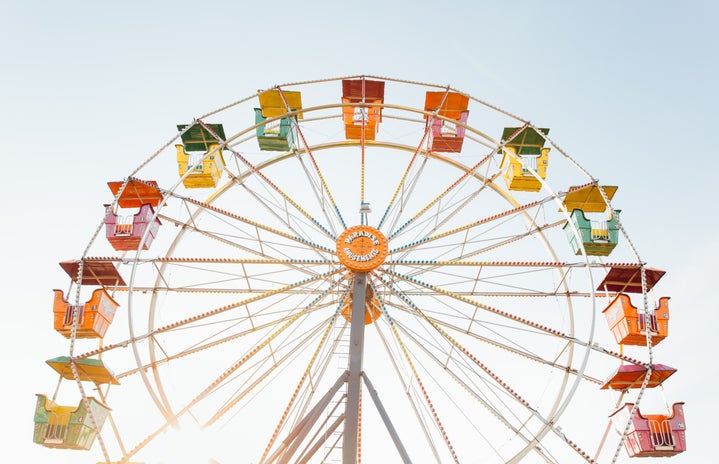This year is the 50th anniversary of the legendary 1969 music festival Woodstock, and music-lovers are anticipating the fourth edition of the event this August. How does today’s political climate compare to then, and will the wild spirit of the original festival be able to survive in a culture so devoted to consumerism?
Woodstock is a word that is now synonymous with ‘60s counterculture, peace, love and psychedelics. The original concert took place during a pivotal time in history. The Vietnam War and the Civil Rights Movement were both in full swing, and the young people of the country needed a hopeful distraction. Thus, the iconic festival was born.
Photo courtesy of @woodstock on Instagram
The differences in music culture between then and now are vast. The original lineup included acts among the likes of Santana, Janis Joplin, Creedence Clearwater Revival, The Grateful Dead and Jimi Hendrix. Woodstock Ventures, Inc.—comprised of the four creators of the festival—became so overwhelmed by the number of attendees that they could not come up with an efficient way of charging for tickets, so the event just became free, according to History. Food, shelter and first-aid were of no charge, as well. The entire structure of the original event relied on the concert-goers abilities to come and simply enjoy music and stay peaceful– and it worked.
Photo courtesy of @woodstock on Instagram
Woodstock 50 will not be the first time the festival has been replicated. Two other Woodstock events were held, both in the ‘90s, and they did not quite meet the utopian standards of the first.
In 1994, Woodstock II was held on the 25th anniversary of the original. According to Frank Mastropolo of Ultimate Classic Rock, even artists in the lineup—including Nine Inch Nails frontman Trent Reznor—were worried that too much about society had changed to pull off another Woodstock. “I feared after I committed to do it that it would be a corporate nightmare, with a Pepsi logo behind the Woodstock thing,” Reznor said to MTV. “But from being here, I’ve got a pretty good vibe. And I’m pleased to see that it turned out to be so far a pretty positive thing for the fans that came here to see us.”
Woodstock II was a seemingly successful event compared to the last installment of the festival: Woodstock ‘99—otherwise known as “the day the ‘90s died.”
The lineup was full of ‘90s icons, including the Red Hot Chili Peppers, Alanis Morissette, Rage Against The Machine and the Dave Matthews Band. “Tickets sold for about $150. Darth Maul bongs cost $30. Michael Lang, who’d organized the iconic 1969 festival that did indeed champion copious amounts of LSD-induced unity, returned as a promoter. What could go wrong?” wrote Matthew Jacobs of the HuffPost in his article “Let’s Revisit The Chaos Of Woodstock ‘99, ‘The Day The Music Died’.”
According to Jacobs, Woodstock ‘99 ended in mud, vomit, rape allegations and a nasty fire that started after the Red Hot Chili Peppers’ performance of “Under The Bridge.”
“Especially for an event that was initially a bastion of free love, it was a particularly damning moment for Y2K-leaning youth culture,” Jacobs said.
Now it is 2019, and politics divide the country. The anti-establishment, anarchist attitude of the ‘90s is not as prevalent, but in an era of less-chaotic but still evident resentment toward the people in power, what will become of Woodstock 50?
Is it going to be like Jurassic Park? Should the country know better than to try and bring something so brilliant and rare back to life?
I am not suggesting that Woodstock 50 will turn into a Fyre Festival situation. By now, the art of the music festival has been perfected as seen at events like Lollapalooza, Stagecoach and Coachella, but should the good, wholesome name of Woodstock have to turn into something as pretentious as Coachella? Woodstock is synonymous with peace, love and freedom; will the fourth edition of the concert live up to that, or will it continue to follow the downhill spiral that the others fell into?
It can be argued that Woodstock should have just stayed the untouchable name of the original festival and a unique hippie spirit. An entire culture cannot be replicated, and to capitalize on an event that once was free admission is a little contradicting.
With that being said, the inevitable commercialization of this year’s festival may be balanced out by Woodstock 50’s “mission,” as posted on its website:
“The original Woodstock Music & Arts Fair brought people together during a time of great social turmoil. Our 3-day celebration of peace, love and music proved that it is possible to live together in harmony and with compassion. Live with only our best selves represented. It gave people around the world hope. For Woodstock 50, we are supporting causes that represent the issues of our times…but our call to action is timeless. Stand with us. Make a difference. Help heal the planet and the people living on it. That’s what Woodstock is all about.”
The website goes on to display some of the charities that the festival is supporting, including March For Our Lives and Miley Cyrus’ Happy Hippie Foundation.
Artists on the lineup include current popular acts spanning all genres, like Brandi Carlile, The Killers and Chance The Rapper. Santana and members of the Grateful Dead (returning with John Mayer as Dead & Company) will be among the multiple returning acts from the original fair.
Photo courtesy of @woodstock on Instagram
Although it will never be perfectly replicated, maybe the eager political and musical climate of 2019 will bring back a spirit reminiscent of the original Woodstock festival.


